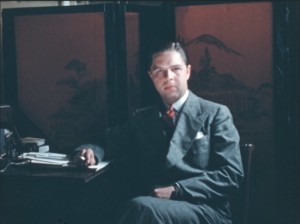
A woman is tempted with thoughts of another man after her husband disappoints her on their anniversary. Will she follow through with the act, or will she remain faithful to her husband?
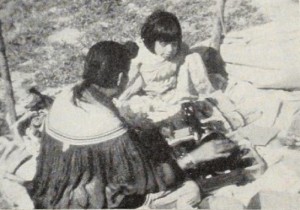
"Florida's colorful Seminole Indians, who never have taken kindly to the white man's rule, generally are no more responsive to visiting filmers. Thus it is a rare and rewarding pleasure when an understanding amateur cameraman gains both their confidence and their cooperation. Such is the stimulating accomplishment of Elmer W. Albinson in his picture called simply Seminole Indians. Among the film's outstanding achievements are its detailed studies of the Indians' arts and crafts, its exceptional work in ultra closeups, and its pictorial probing of the Indian character and customs. An extraordinarily good musical score enhances the appeal of this informative ethnic documentary. The picture needs, however, a somewhat stronger ending, the present one impressing these reviewers as artistically indecisive." Movie Makers, Dec. 1950, 466.
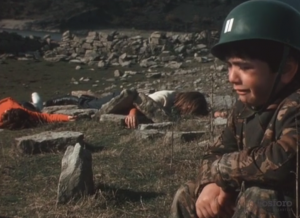
Un pequeño niño llamado Sergio hace una lista de regalos que desea, en la que incluye un traje de soldado, una metralleta y otras armas. Después Sergio tiene un sueño en el que es un soldado explorando el campo y divirtiéndose con sus armas; el sueño se transforma en pesadilla cuando ve a su familia muerta y cubierta de sangre. Sergio llora y besa a sus familiares muertos para después tirar su metralleta de juguete cubierta de sangre. Después despierta asustado y destruye su lista de deseos.
A little boy named Sergio makes a wish list of gifts that include a soldier suit, a machine gun and other weapons. He then has a dream of himself as a soldier exploring the country and having fun with his guns; the dream turns into a nightmare when he sees his family dead and covered in blood. He cries and kisses the dead members of his family and finally he throws away his toy machine gun covered in blood. Sergio wakes up scared and destroys his wish list.
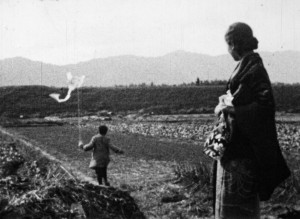
‘Ayako prays at the grave of her brother. Returning home, she helps Seizo - her late brother's young friend - to release his kite caught in the trees; an interlude that restores memories of the departed. Rural life and customs and the special delights of childhood are skilfully conveyed’ (EAFA Database).
Referred to "Sister and Brother" in 1932 American Cinematographer competition.
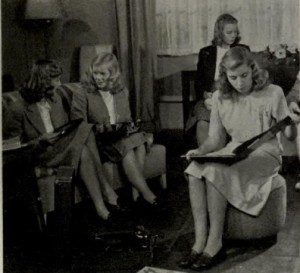
"Sitting Right, a lively, attractive argument for good sitting posture, directs its message to the 'teen aged young ladies of America. Shrewdly, its producers — Grant, Flory and Williams — have brought complete authenticity to this possibly unpopular thesis by presenting it throughout in the playing of actual (and average ) high school girls. These same girls, adds John Flory, the director, even contributed many of the situation suggestions which are woven into the swiftly moving message of the film. The production is marked by fine lighting and camera work, heightened in their effect by a modern and refreshing treatment of the narrative track." Movie Makers, Dec. 1946, 490.
"Various scenes of the Behrens family on holiday in Skerries in the summer of 1925. Includes nice footage of a group of toddlers and babies playing with bouncy balls, in a cliff top garden overlooking the sea. One of the children is seen pushing a very ornate push chair backwards and forwards across the grass - lots of toys litter the ground around them. Further scenes include some children in bathing costumes and caps, paddling along the waters edge; a family group sitting on a rocky shore smiling at the camera and a couple of adults swimming in the sea and drying themselves on the beach" (NWFA Online Database).
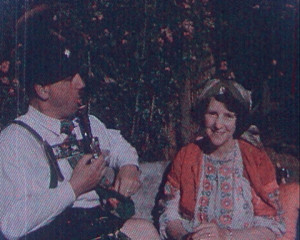
"Series of short films of gardens, landscapes and dogs. Footage includes the gardens at the Alliott house in Amersham and country locations near Amersham." (EAFA Database)
"Family footage shot in the grounds of a large house in Moorside; 1925. Some children and their nanny play on the lawn. A group of adults are seen having afternoon tea outside in the garden. Also includes shots of a young boy doing somersaults on a set of gymnast's rings. The camera remains stationary and several adults run into shot, in quick succession, and do a forward somersault using the rings. Even the nanny, who is in full uniform, has a turn" (NWFA Online Database).
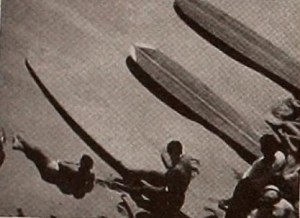
"Dan Billman, jr., has told you in the September number of this magazine how he came to make South of Honolulu. What he could not possibly put into words is the outright and amazing entertainment value of this elaborate record. Hawaii, for the Billmans, meant far more than the Aloha Tower, Diamond Head and the Kodachrome set piece of weekly hula dancing. In their place this adventurous couple found — some 200 miles south of Honolulu — the calm beauty of native life, the exciting patterns of native fishing and feasting and the exotic loveliness of tropical blooms against their true backgrounds. For them, no filming task seemed impossible. Their achievements range from an amusing sequence of the "'sea going" cowboys of the Hawaiian coast, to a striking and incredible study of religious ceremonies within a Buddhist temple. Mr. Billman's beautifully filmed production, accompanied throughout with sound and music personally recorded in the Islands, has the full bodied stature of mature screen entertainment." Movie Makers, Dec. 1941, 564.
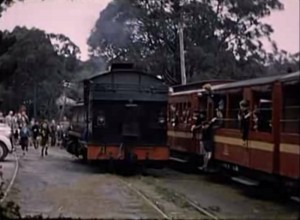
"Amateur travelogue of an extensive trip to Australia photographed and produced by "The Traveling Sebrings," Lewis B. Sebring, Jr. and Alice P. Sebring. Lewis B. Sebring, Jr. was a journalist and war correspondent for the New York Herald-Tribune, who reported on combat in the Southwest Pacific Area theater during World War II. The trip documented in this film, which they referred to also as "An Odyssey to Australia" covers the entire continent of Australia, from Sydney, Melbourne, Adelaide, Port Augusta and Kalgoorlie, Perth, and Brisbane, and everything in between, usually documented via passenger train. In each city, the film expertly documents landscape, architecture, and people, as well as rural areas and animals." Wisconsin Historical Society.
Total Pages: 29